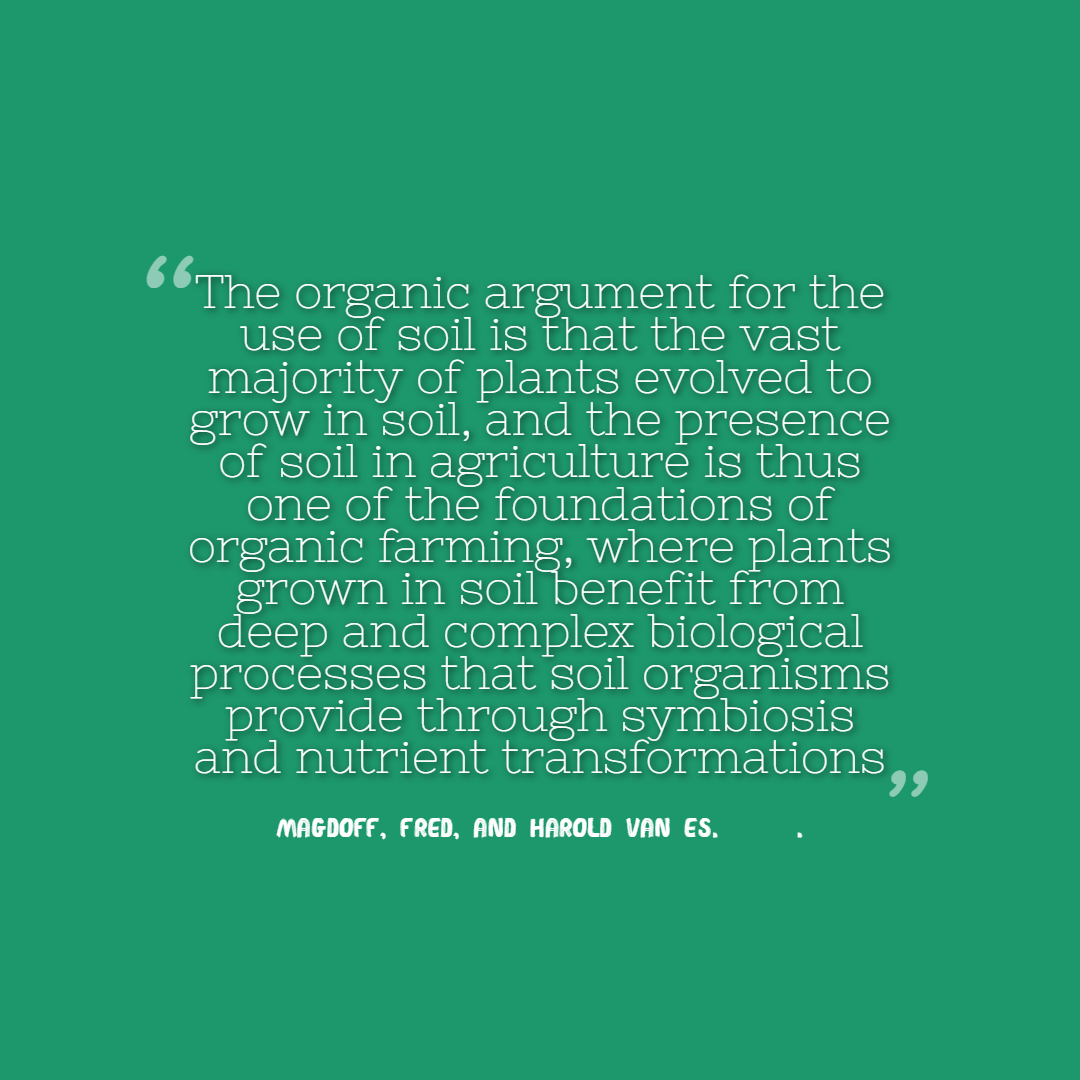Plants have evolved over millions of years to thrive in a symbiotic relationship with soil, a vibrant ecosystem teeming with life. Soil organisms work to break down organic matter into essential nutrients for plants, forming a partnership that has been perfected over eons.
Conventional soil-less aquaponic systems are based on hydroponic technology which goes against the organic principle of respecting natural systems and cycles, as plants that do not grow naturally in water are cultivated with their roots in/partially in water.
Organic farming methods such as iAVs embrace this relationship, allowing nature’s processes to unfold naturally and fostering a harmonious balance within the soil ecosystem. The argument for using soil in organic farming is rooted in the belief that plants benefit from the deep biological processes provided by soil organisms.
iAVs uses a holistic approach that respects the natural cycles and interdependencies that have sustained life on our planet for millennia.
The use of soil in iAVs solves the long-held problem in conventional aquaponics of the differing water parameters (most notably pH) between the plant and fish units, which has been argued to produce fish and plants in sub-optimal conditions (Palm et al. 2019).
In fact, there is potential for soil to possibly act as a buffer, maintaining a relatively acidic environment in the plant unit, whilst maintaining a relatively alkaline environment in the fish and biofilter units. In the published iAVs research, pH buffered after 5 weeks and no changes were needed.
The inclusion of soil in iAVs makse the addition of beneficial soil organisms possible, which could in turn improve the overall condition of the soil, keep the plant rhizome healthy, and benefit the plants by enhancing the availability of nutrients, a practice that is allowed by Commission Regulation (EU) 2018/848 (rule 1.9.6).
Beneficial soil microorganisms include mycorrhizae (symbiotic associations between soil fungi and plant roots) and beneficial soil bacteria that are already naturally present in the soil and benefit most plants today (Adams et al. 1998).
Furthermore, during the irrigation cycle in iAVs, the water level in the tank can drop by about 25% which changes the environment for the fish. Enriching the aquaculture environment can have several positive effects on fish physiology, health, and survival (Näslund & Johnsson 2016).
iAVs fully utilizes all of the fish waste in order to provide the plants with the missing microelements that are generally removed with the solid part of the waste.
Choosing iAVs means embracing nature’s biological symphony and working with the soil’s living ecosystem to grow food sustainably. It’s a call to return to our roots and honor the deep, biological processes that have sustained life for millennia.
———————————————
source: Fruscella, Lorenzo, Benz Kotzen, and Sarah Milliken. “Organic aquaponics in the European Union: towards sustainable farming practices in the framework of the new EU regulation.” Reviews in Aquaculture 13.3 (2021): 1661-1682.
By citing valid and credible sources, we strive to uphold the highest standards of integrity and transparency in our content. Our commitment to using reputable sources ensures that the information we share is well-researched, fact-checked, and trustworthy, empowering our readers to make informed decisions and engage in meaningful discussions.

 Creative Commons Attribution-NoDerivs
Creative Commons Attribution-NoDerivs